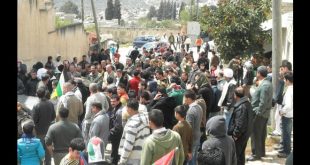 Eighteen year-old Michael Brown was finally laid to rest, but issues surrounding this tragic killing have not. The facts surrounding the police shooting of the teenager remain largely unknown, with a grand jury hearing testimony and at least three other investigations underway.
Eighteen year-old Michael Brown was finally laid to rest, but issues surrounding this tragic killing have not. The facts surrounding the police shooting of the teenager remain largely unknown, with a grand jury hearing testimony and at least three other investigations underway.
This lack of facts, however, did not prevent violence and gratuitous looting on the streets of Ferguson, Missouri as well as racial agendas, runaway rumors and media leaks from driving debates and discussions. Converging black leaders and demonstrators are united in one demand: “Justice for Mike Brown.” This only means one thing: The arrest and prosecution of the cop who shot Brown for murder.
The few undisputed facts are that the officer, Darren Wilson, a six-year veteran of the Ferguson police force with a reputedly unblemished service record, shot an unarmed Brown six times after a middle-of-the-street confrontation. Also undisputed, but controversial to some, is a grainy video released by the police showing “Big Mike” Brown stealing cigarillos from a convenience store and roughing-up an undersized clerk. The autopsy of Brown’s body, paid for by his family, indicates he was shot six times — none in the back — with forensics yet to determine what these wounds actually mean.
Muddying the water are those claiming to be eyewitnesses to the shooting but wildly contradicting each other. This has yet to be sorted out by investigators. In other words, we still don’t really know what took place. If the officer shot him because of racial animus, anger or error, he should be held accountable to the full extent of the law.
We’ve seen this all play out many times — the insulting claim that justice must come in the form demanded by street activists, despite the long-held American tradition that real justice only comes after facts are examined, sifted and only then adjudicated in a court of law.
One such example was the 2012 shooting of the teenage Trayvon Martin by George Zimmerman, a community watch volunteer. Even though few facts were known early on, black civil rights leaders gathered in Sanford, Florida to lead protest marches demanding the immediate arrest and prosecution of Zimmerman for murder. This, black leaders claimed, would amount to justice.
Reverend Al Sharpton, and other national figures, whipped crowds into frenzies, shouting “No Justice, No Peace” into microphones. By inference, it was a threat that if the justice they demanded was not delivered, the streets of America’s urban communities would not be peaceful. They insisted the killing of the black teenager was an act of racism, even though information was readily available that Zimmerman was Hispanic, and had a dark-skinned Afro-Peruvian grandmother. Zimmerman may have been a jerk and wannabe cop, but he hardly fit the description of a racist.
This grotesque pantomime of repression and redemption continues after the killing of Michael Brown. At Brown’s funeral, his cousin, Eric Davis, said, “We have had enough of having our brothers and sisters killed in the streets.” Another mourner said, “If Darren Wilson is not charged, there will be an uprising.”
A sordid backdrop was that, over a single recent weekend in New York, 15 black youths were shot and two died. The perpetrators were young black men. Meanwhile, in Chicago, over the 4th of July holiday weekend, 35 black youths were shot and six were killed in mostly gang-related incidents. The suspects in these shootings were all young black men. The world rightly knows the name “Michael Brown,” but those black teenagers shot down in New York City and Chicago remain largely anonymous victims of urban violence. The facts of the violence in these cities are well-known. There is no accurate idea of whether Officer Wilson had good reason to stop Brown, was involved in an altercation with a robbery suspect, was “bum-rushed” or if he panicked, overreacted and shot an unarmed man. At this point, it’s ambiguous.
And lest we think condemning law enforcement in Ferguson is confined to the usual sources, an assumed presidential candidate, Republican Senator Rand Paul, joined the rush to judgment — blasting the Ferguson police. In doing so, he found himself in the strange company of various national racial opportunists that include Malik Shabazz, the anti-Semitic former voice of the New Black Panther Party, and Minister Louis Farrakhan’s Nation Of Islam.
Paul said, “The images and scenes we continue to see in Ferguson resemble war more than traditional police action.” But this argument seems to indicate that perhaps this senator was not paying close attention to the dangerous levels of anarchy that existed on the streets of Ferguson — the highlights of which included arson and full-scale looting as well as protestors throwing Molotov cocktails, water bottles filled with urine, rocks, bottles and bricks.
America’s police forces are inherently paramilitary agencies, whose responses by necessity get ramped up when the police are faced with mobs of unruly, violent people.
It is appropriate to raise questions about the level of “militarization” of police agencies nationwide. Citizens ultimately control these agencies and, through civic engagement, should establish the level of policing and equipment needed to keep our cities safe.
It is also appropriate to debate the relevancy of today’s civil rights movement, whose purpose no longer seems to seek justice but power based on the presumption that they are still oppressed and victimized by white racism. Sharpton and other national black leaders insist that “America is a racist nation” or that “black life is cheap in America” or the latest bumper-sticker refrain, “Hands up, don’t shoot.”
The moral authority that served Dr. Martin Luther King, Fannie Lou Hamer, Medgar Evers and the numerous civil rights campaigns launched during the glory days of the ‘50s and ‘60s was squandered through endless claims of racism that ring hollow.
Thus, in the agonizing issue of Michael Brown’s death, protestors are once again insisting on an amorphous, cosmic justice — not justice based on a process that requires reason, patience and, yes, evidence.
Photo credit: Wikimedia Commons
 Joe R. Hicks, a member of the national advisory council of the Project 21 black leadership network, is vice president of Community Advocates, Inc., and a former executive director of the Southern Christian Leadership Conference. A version of this appeared in the Jewish Journal.
Joe R. Hicks, a member of the national advisory council of the Project 21 black leadership network, is vice president of Community Advocates, Inc., and a former executive director of the Southern Christian Leadership Conference. A version of this appeared in the Jewish Journal.
 CURE News and Clergy Blog News and Commentary for Christians
CURE News and Clergy Blog News and Commentary for Christians



